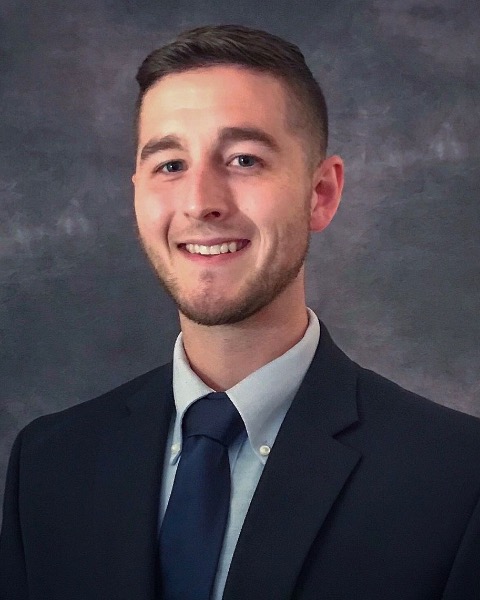Back
Poster Session C - Monday Afternoon
C0245 - An Unusual Case of Dysphagia Secondary to Cervical Osteophytes
Monday, October 24, 2022
3:00 PM – 5:00 PM ET
Location: Crown Ballroom

Logan Striplin, MD
University of Massachusetts Chan Medical School - Baystate
Springfield, Massachusetts
Presenting Author(s)
Introduction: Leading causes of dysphagia include esophageal stricture, Schatzki ring, eosinophilic esophagitis, esophageal spasm, and achalasia. Cervical osteophytes are an uncommon cause of dysphagia. We report a woman who presented with dysphagia and was found by esophagogastroduodenoscopy (EGD) to have protrusions in the upper and mid esophagus consistent with cervical osteophytes.
Case Description/Methods: A 66-year-old woman with past medical history of chronic gastroesophageal reflux disease (GERD), Barrett’s esophagus, and systolic heart failure was admitted to the hospital for IV diuresis due to heart failure exacerbation. On hospital day 3, she reported years of difficulty swallowing associated with globus sensation near her sternum. A barium swallow showed a filling defect in the thoracic esophagus associated with significant dysmotility proximal to the defect. She was taken for EGD, which demonstrated two protrusions in the upper to mid esophagus that were hard in texture, consistent with a diagnosis of cervical osteophytes (Figure 1). She was instructed to take small bites of food with sips of water to facilitate food passage. Once she was stable from a heart failure perspective, neurosurgical intervention could be considered for definitive treatment.
Discussion: Cervical osteophytes can cause dysphagia, odynophagia, and globus sensation when they protrude from the anterior cervical vertebrae into the esophagus. This can cause mechanical compression leading to obstruction as well as spasm inflammation and spasm. Dysphagia caused by cervical osteophytes is usually managed with dietary modifications, swallowing therapy, and non-steroidal anti-inflammatory drugs. When conservative management fails, or osteophytes become large, surgical intervention is recommended. A review by Verlaan et al. showed that 35 of 169 cases were managed conservatively; the remainder were treated with surgery, the most common being resection of the osteophyte without spinal fusion. Complications of osteophyte resection include vocal cord palsy, esophageal perforation or fistula formation, and Horner syndrome. Clinicians should consider this rare cause of dysphagia in the differential for dysphagia patients and consider the risks and benefits of surgical intervention should conservative management fail.
Case Description/Methods: A 66-year-old woman with past medical history of chronic gastroesophageal reflux disease (GERD), Barrett’s esophagus, and systolic heart failure was admitted to the hospital for IV diuresis due to heart failure exacerbation. On hospital day 3, she reported years of difficulty swallowing associated with globus sensation near her sternum. A barium swallow showed a filling defect in the thoracic esophagus associated with significant dysmotility proximal to the defect. She was taken for EGD, which demonstrated two protrusions in the upper to mid esophagus that were hard in texture, consistent with a diagnosis of cervical osteophytes (Figure 1). She was instructed to take small bites of food with sips of water to facilitate food passage. Once she was stable from a heart failure perspective, neurosurgical intervention could be considered for definitive treatment.
Discussion: Cervical osteophytes can cause dysphagia, odynophagia, and globus sensation when they protrude from the anterior cervical vertebrae into the esophagus. This can cause mechanical compression leading to obstruction as well as spasm inflammation and spasm. Dysphagia caused by cervical osteophytes is usually managed with dietary modifications, swallowing therapy, and non-steroidal anti-inflammatory drugs. When conservative management fails, or osteophytes become large, surgical intervention is recommended. A review by Verlaan et al. showed that 35 of 169 cases were managed conservatively; the remainder were treated with surgery, the most common being resection of the osteophyte without spinal fusion. Complications of osteophyte resection include vocal cord palsy, esophageal perforation or fistula formation, and Horner syndrome. Clinicians should consider this rare cause of dysphagia in the differential for dysphagia patients and consider the risks and benefits of surgical intervention should conservative management fail.
